Mention the name of Italian film maker SERGIO LEONE, and the "Trilogia del dollaro (Dollars Trilogy)" aka: the "Man with No Name Trilogy", starring American actor Clint Eastwood, usually comes to mind. By the way, Eastwood's gunfighter-bounty hunter was not without a name in each of the three films.
Should you really be into Sergio Leone's work, then you would know that there also was his "Trilogia C'era una volta (Once Upon a Time Trilogy)". Probably the most known of those three, outside of Italy, is 1968's "C'era una volta il West (Once Upon a Time "There Was" the West)"the correct Italian to English title.
Between 1946 and 1973, Sergio Leone's main position within the Italian motion picture industry, was that of an "Assistant Director" on twenty-seven Italian motion pictures and one American release, 1959's "The Nun's Story", starring Audrey Hepburn and Peter Finch.
During those same years, Leone was also a "Second Unit Director" on four American films, and two Italian features. Additionally, between 1958 and 1984, Sergio Leone, co-wrote seventeen screenplays, including two for star Steve Reeves, one for American Western Television star Rory Calhoun, another for Anita Ekberg, and the two trilogies.
What may surprise my reader is that Sergio Leone only Directed seven feature films between 1961 and 1984. With the exception of the one 1961 Peplum (Sword and Sandal), starring Rory Calhoun, the other six films were his two trilogies. There is a 1991 French documentary on European commercials that included three by Leone.
This article is divided into two parts:
The first is a short overview of the American productions that were filmed in Italy that Sergio Leone worked upon as a "Second Unit Director".
The second part of this article is a full look at Sergio Leone's work as a "Director" on both the "Trilogia del dollaro" and "Trilogia C'era una volta".
PART ONE:
THE SECOND UNIT DIRECTOR
QUO VADIS released November 8, 1951 in New York City
Metro-Goldwyn-Mayer had acquired the rights from the estate of author Henryk Sienkiewicz in the later 1930's. Their plans to keep production costs down was to film the motion picture in Italy, but the Second World War put a hold on the project.
Like many American motion picture studios, MGM had money in British banks from before the war and these funds had acquired interest over the war years. Faced with paying taxes from both the United Kingdom and United States, if the money was brought home. The studio decided to film in England and Italy and in 1948, "Quo Vadis" went into pre-production to be filmed at the huge, 148 acres with 9 sound stages, "Cincetta Studios", located just outside Rome.
When the final casting was completed, Robert Taylor portrayed the Roman Centurion "Marcus Vinicus", Deborah Kerr portrayed his Christian love "Lygia", Leo Genn portrayed Nero's trusted advisor "Petronius", and Peter Ustinov portrayed "Emperor Nero". The majority of the twenty-seven speaking roles went to British actors, but the 102 uncredited additional cast was a mixture of British, American, and Italian actors. Don't waste your time, but within that 102 is a unknown Sophia Loren as "Lygia's slave", future British Horror star Christopher Lee as a chariot driver, and even Elizabeth Taylor, on vacation in Rome, as a Christian prisoner in the arena. The film was narrated by Walter Pidgeon.
However, I am only interested in one area of the crew under the heading of "Second Unit Director or Assistant Director", with three uncredited names.
The Director on "Quo Vadis" was Mervyn Leroy, whose latest feature film was 1951's "East Side, West Side", starring Barbara Stanwyck, James Mason, Van Heflin, and Ava Gardner.
Leroy's "Assistant Director", a fine sounding title for uncredited Peter Bolton, but according to https://www.screenskills.com/
The Assistant Director's responsibility is to keep the production on schedule throughout the day, communicate to the entire crew, and to maintain the safety and security of the staff and shot itself. An assistant director must be very good at estimating how long a scene will take. (Sometimes a scene running a few pages long on the screenplay can be shot relatively quickly, while a half page emotional key moment may take all day).
Peter Bolton's assistant, or the "Second Assistant Director" was actually Director Anthony Mann in only one of two times he was in this lower production role. At the time of filming "Quo Vadis", Mann had directed 24 films that included two early 1939 television movies, and the classic James Stewart Western, 1950's "Winchester '73", and the Barbara Stanwyck, Wendell Corey, and Walter Huston 1950 Western "The Furies".
Once again according to "screenskills":
This sounds far below Anthony Mann and we do know he filmed the burning of Rome sequence, but according to Jeanine Basinger in her 1979, "Anthony Mann" for the "Wesleyan University Press" was not the co-director of the motion picture as some have credited him.
The "Second Assistant Director" creates the daily call sheets from the production schedule, in cooperation with the production coordinator. The "second" also serves as the "backstage manager", liaising with the actors, putting cast through make-up and wardrobe, which relieves the "first" of these duties. Supervision of the second second assistant director, third assistant director, assistant director trainees, and the setting of the background (extras) are parts of the "second's duties".
Which brings me to the third name on this list, Sergio Leone as the uncredited "Second Unit Director". According to https://beverlyboy.com/film-crew-positions/what-is-a-second-unit-director/
The Second Unit Director is responsible for shooting various supplemental footage that complements the original footage. This includes establishing any major shots related to stunts, insertions or cutaways that make the film come together seamlessly.
The "Second Unit Director" often takes the lead in shots that are deemed to expensive, dangerous or demanding for the first unit director to accomplish. They capture the scenes in a timely manner without imposing significant costs to budget that may otherwise incurred by the first unit production crew.
By this motion picture, Sergio Leone had been an actor, three times, including portraying an American soldier in Director Roberto Roberti's 1950 "Il folle di Marechiaro (The Madman of Marechiaro)".
Below, is Sergio Leone as a "Seminary Student" in Director Vittorio De Sica's 1948 classic "Ladi di biciclette (Bicycle Thieves)".
Sergio Leone had also been a "Assistant Director" on ten Italian feature films including the above mentioned "Bicycle Thieves", and four films Directed by the controversial, pro-fascist Carmine Gallone.
Below, "Second Unit" shots for "Quo Vadis".
HELEN OF TROY released January 26, 1956
"Helen of Troy" was Directed by Robert Wise, whose latest film was 1954's "Executive Suite" starring William Holden, June Allyson, Barbara Stanwyck, Fredric March, Walter Pidgeon, Shelley Winters, Paul Douglas, and Louis Calhern.
My article about the director, that includes a deeper look at this motion picture, "Director Robert Wise: Horror, Science Fiction and the Greek Homer", will be found at:
http://www.bewaretheblog.com/2020/01/director-robert-wise-horror-science.html
The motion picture was filmed at Rome's "Cinecitta Studios" and at Punta Ala, a small town in the Italian province of Grosseto. This was one of those pre-CGI motion pictures with a "Cast of Thousands" made up of British, French, and Italian actors.
Italian actress Rossana Podesta portrayed "Helen", Lithuanian and French actor Jacques Sernas portrayed "Paris", British actor Sir Cedric Hardwicke portrayed "King Priam of Troy", Welsh actor Stanley Baker portrayed "Achilles", Irish actor Nial MacGinnis portrayed "King Menelaus", British India born Torin Thatcher portrayed "Ulysses", British actor Harry Andrews portrayed "Hector", and British actress Janette Scott portrayed "Casandra".
My article on Torin Thatcher who played the evil magician in Ray Harryhausen's "The 7th Voyage of Sinbad", entitled, "Torin Thatcher: The Career of a Great British Character Actor", may be read at:
http://www.bewaretheblog.com/2017/07/torin-thatcher-career-of-great-british.html
Under the heading of "Second Unit Director or Assistant Director" are two credited names and three uncredited names. The first credited name as "Assistant Director" is Italian Iginio Edward Agosti, known as Gus Agosti. Among his films are Burt Lancaster's 1952 "Crimson Pirate", Director David Lean's 1957 "The Bridge on the River Kwaii", and Sean Connery's 1965 "Thunderball".
One of the three uncredited names is the "Second Assistant Director", American Frank Mattison. Between 1935 and 1955, he was either the "Unit, or Production Manager" on 32 motion pictures. While between 1933 and this feature, Frank Mattison was a "Assistant Director" 17 times. In all three categories he was never credited.
The credited "Second Unit Director" was a name very familiar to American Westerns. This was stunt man, actor, director, writer, and producer Yakima Canutt and was his 41st feature film as "Second Unit Director".
The first uncredited "Second Unit Director" was the man that gave John Wayne his name. This was Western and action film director "One-Eyed Raul Walsh". This was only Walsh's third time in this capacity and his first was back in 1915 for Director D.W. Griffith's "Birth of a Nation".
The second uncredited "Second Unit Director" didn't speak English and was Sergio Leone. Leone's eight previous pictures after "Quo Vadis" had him as a credited "Assistant Director".
Below, "Second Unit" shots for "Helen of Troy".
BEN-HUR released on November 18, 1959
Five-years earlier, Charlton Heston was in a forgotten motion picture that Steven Spielberg, and George Lucas were concerned over "Paramount Pictures" threatened re-release. My somewhat controversial article, "Charlton Heston: The Original "INDIANA JONES", can be considered at:
http://www.bewaretheblog.com/2019/07/charlton-heston-original-indiana-jones.html
http://www.bewaretheblog.com/2021/09/director-william-wyler-director-billy.html
There were two credited "Assistant Directors", I've mentioned the first, Gus Agosti, above. The second credited "Assistant Director" was Italian Alberto Cardone, he had performed this task in twelve Italian films between 1944 and this feature. Cardone had also been a film editor on one of those pictures.
There were two uncredited "Assistant Directors", the first was Italian Ferdinando Baldi. This was his only motion picture in this capacity, but between 1953 and this feature, Baldi directed the first five of his thirty-eight motion pictures.
The second uncredited "Assistant Director" was American Donald C. Klune. Whose main work from 1960 through 1995 would be on American television. He had only been a "Second Assistant Director" on two motion picture prior to this film.
The second credited "Second Unit Director" was Austrian-Hungary born Andrew Marton. Marton's previous sixteen motion pictures in this capacity included, Director Frank Capra's 1937 "Lost Horizon", Director John Huston's 1951 "The Red Badge of Courage", and Director George Cukor's 1956 "Bhowani Junction".
There were two uncredited "Second Unit Directors" and Sergio Leone was the first. Leone had just been both the credited "Assistant Director" and "Second Unit Director" on the Steve Reeves 1959 "The Last Days of Pompeii".
The second uncredited "Second Unit Director" was Italian Mario Soldati. Soldati was the only "Second Unit Director" on Director King Vidor's epic 1956 version of Leo Tolstoy's "War and Peace", starring Audrey Hepburn, Henry Fonda, and Mel Ferrer. Between 1938 and this film, Mario Soldati had directed thirty-one Italian motion pictures.
"Ben-Hur" also had a uncredited "Third Unit Director" in American Richard Thorpe. This would be his only picture in this capacity, but between 1923 and this film, Thorpe had already directed, one-hundred-and-seventy-five feature films.
Below, "Second Unit" shots for "Ben-Hur".
http://www.bewaretheblog.com/2015/05/the-bible-according-to-hollywood.html
The motion picture was a French, Italian, and American co-production, Directed by Robert Alrich. This was a major international cast production starring Stewart Granger, Anouk Aimee, Stanley Baker, Pier Angeli, and Rossana Podesta.
What my reader needs to know, is that Sergio Leone was hired as the only "Second Unit Director", but something happened early in the production. He either just walked off the shoot in disgust, or was fired. American Oscar Rudolph took over in that position.
The same year of this feature, Leone would the "Second Unit Director' on the Italian motion picture, "Il cambio della guardia (The Changing of the Guard)", I
TRILOGIA DEL DOLLARO
Sergio Leone was making, in Italy, an American Western to honor the work of Akira Kurasawa. Kurosawa had done a similar thing with William Shakespeare's "Macbeth" as his 1957 "蜘蛛巣城 (Spider Web Castle aka: Throne of Blood)", and American Director John Sturges would do a similar thing to Akira Kurosawa's 1954 "七人の侍 (Seven Samurai) as his 1960 "The Magnificent Seven")
http://www.bewaretheblog.com/2015/01/american-westerns-european-style.html
I bring this up, because on January 18, 1967, after already showing, besides Italy, in Greece, West Germany, Spain, Japan, France, Argentina, Sweden, the Netherlands, Portugal, Denmark, and Canada, "A Fistful of Dollars" finally came to the United States. The following is the original release poster from "United Artists" and I draw my readers attention to their very long first tag line. Which give the potential audience member the false impression that this was the first European Western to come to United States. For that matter, giving the impression that the picture wasn't Italian, or dubbed, but made in the U.S.A.:
While the secondary tag line reads that this:
is the first motion picture of its kind. It won't be the last!
My reader should know that the final film of Sergio Leone's trilogy had been released in Italy in 1966. American distributor, "United Artists", had both the second and third films of the trilogy, being dubbed for release in the United States prior to the release date of "A Fistful of Dollars".
The above, first poster for the motion picture, clearly shows Sergio Leone as the director and is from a later Italian re-release, but the American, second poster, has his name buried in small print at the bottom to hide any connection with Italy. Below, is one of the original Italian posters and my reader should note the name of the director at the very bottom.
The estimated budget for the film in dollars was $225,000, but the initial worldwide box office was $19.9 million dollars.
Originally Sergio Leone wanted Henry Fonda for what had been Japanese actor Toshiro Mifune's role in "Yojimbo", but Leone's financial backers couldn't afford his salary. Next, Charles Bronson was offered and declined the role using the argument that the screenplay was bad. Among the others offered the role and turning it down for various reasons were, Steve Reeves, James Colburn, Ty Hardin, and Rory Calhoun. After which, Leone inquired if ex-American patriate Richard Harrison, who had starred in the first Spaghetti Western, was interested in the role, but he also turned it down.
There are two stories on how Clint Eastwood was offered the part and they both revolve around the television series "Rawhide".
One states the role was offered to Eric Fleming, who portrayed "Gil Favor", but he wasn't interested and suggested Eastwood.
The other came in a interview with Richard Harrison about turning the role down, but suggesting Clint Eastwood for the part, referenced at:
https://www.nanarland.com/interviews/entretiens/en/richard-harrison.html
Maybe my greatest contribution to cinema was not doing A Fistful of Dollars and recommending Clint for the part.
https://www.jjfox.co.uk/blog/culture/famous-cigar-smokers-clint-eastwood/
There is no official answer to which kind of cigars Eastwood was smoking. Some assume the cigars must have been Italian cigars such as Toscano cigars, given the nature of the films being Italian. However, Eastwood has stated in an interview that the cigars were from the US and were called ‘Virginians’. It has also been speculated that he was smoking the nub of a Marsh Wheeling cigar, which closely resembles what you can see in the films.
Clint Eastwood was now faced with a problem for many American actors on Italian films. He didn't speak the language, and, as I previously stated, Sergio Leone didn't speak English. However, actor Benito Stefanelli, billed as "Benny Reeves" in the role of "Rubio", spoke both and became Eastwood's translator.
Marianne Koch portrayed "Marisol". German actress Koch had just been seen in the West German 1964 "Das Ungeheuer von London-City (The Monster of London City)" about the spirit of Jack the Ripper possessing people in 1960.
Gian Maria Volonte billed, depending upon the country the film was released as "John Wells" in the Italian version, and "Johnny Wels" in the English language version, portrayed "Ramon Rojo". The Italian actor appeared in several mini-series and had just been in 1963's "Il terrorista". Which was based upon a true story of heroism during the Second World War.
Wolfgang Lukschy portrayed "John Baxter". The Berlin born German actor had just co-starred with Peter van Eyck in 1963's "Scotland Yard jagt Dr. Mabuse (Scotland Yard is chasing Dr. Mabuse)".
Sieghardt Rupp portrayed "Esteban Rojo". Austrian born Rupp normally appeared in West German crime dramas in minor roles. In 1964 he was in "Unter Geiern (Among Vultures)" one of a series of West German Westerns, see my link above, starring Stewart Granger and Pierre Brice.
Antonio Prieto portrayed "Don Benito Rojo" in the Italian version, and "Don Miguel Rojo" in the English language version. Spanish actor Prieto was an award-winning stage actor that also appeared in motion pictures. He had been in 1963's "Le tre spade di Zorro (The Three Spades of Zorro)" aka: "Sword of Zorro" starring American Guy Stockwell.
Jose Calvo portrayed "Silvanito". The Spanish character actor had played "Francisco" in the first Spaghetti Western, 1963's "Duello nel Texas" known inSpain as "Gringo".
TWO FILMS AS ONE:
There are several plot points that are almost exactly the same in 1964's "Por un pugno di dollari" and 1961's "Yojimbo". The following are examples:
A Fistful of Dollars:
A drifter named "Joe" rides into the town of San Miguel and the innkeeper "Silvanito" warns him of the town's two bosses, the "Rojo's" at one end of the main street and the "Baxter's" at the other end, and he realizes the advantage he has by being in the middle.
Yojimbo:
"Kuwabatake Sanjuro", played by Toshiro Mifune, comes into the town and meets "Gonji", played by Eijiro Tono, the bar owner, Who warns him that there are two bosses in town, "Ushitora", played by Kyu Sazanka, and "Seibei", played by Seizaburo Kawazu, and "Sanjuro" realizes the advantage he has by being in the middle.
A Fistful of Dollars:
"Joe" tells the coffin maker to prepare three coffins, meets the "Baxter's" men who had insulted him earlier with one added man, kills them, and passing the coffin maker again. "Joe" tells him he made a mistake, make those four coffins.
Yojimbo:
"Sanjuro" stands in front of the coffin maker's shop and yells to him:
The young wife, "Marisol" has been taken by "Ramon Rojos", because her husband cheated in a card game, but "Julio", played by Daniel Martin, was framed by "Ramon". Her young son, "Jesus", is played by Nino de Arco".
"Sanjuro" learns that the woman "Nui", played by Yoko Tsukasa, was lost to "Ushitora" by her husband, "Kohei", played by Yoshio Tsuchiya, over a gambling debt.
Next, "Sanjuro" learns of the house "Nui" is located at, kills the guards, rescues her and reunites "Nui" with her husband and son, played by Yosuke Natsuki.
In both films our anti-hero is severely beaten and returns for the final showdown. In "Yojimbo", "Gonji" is captured by "Ushitora", in "Fistful of Dollars" it is "Silvanito", and both are rescued before the final confrontation takes place.
While Akira Kurosawa was on record as enjoying "Per un pugno di Dollari", and complimenting Sergio Leone for his fine motion picture. Leone didn't get permission from either Kurosawa, or "Toho Studios" to make the film. A lawsuit against Sergio Leone came from Toho and it was settled out of court for 15-percent of the worldwide box office.
PER QUALCHE DOLLARO IN PIU (FOR A FEW DOLLARS MORE) released in Italy on December 30, 1965
The motion picture wouldn't come to the United States until May 10, 1967.
Sergio Leone had found himself a new producer, Alberto Grimaldi. Who had only started producing films, Spaghetti Westerns to be exact, since 1962, but would go on to produce one of the segments of 1968's "Spirits of the Dead" starring Terence Stamp, Italian Director Federico Fellini's 1969 "Satyricon", 1969's "Burn" starring Marlon Brando, and Director Bernardo Bertolucci's 1976, "1900", starring Robert De Niro.
Leone wanted Clint Eastwood back, but the actor wasn't ready to commit to another picture. At the time filming was to begin, Eastwood had yet to see his finished first motion picture. According to Michael Munn in his 1992, "Clint Eastwood: Hollywood Loner", one of the Italian language prints was sent to Clint Eastwood and he arranged for a screening at the "CBS Production Center" where he was still filming televisions "Rawhide". His audience, who probably didn't under Italian, but enjoyed the picture, convinced Eastwood to sign-on to the sequel. Now, Clint Eastwood portrayed the bounty hunter named "Monco" in the Italian language version, and "Manco" in the English language version. In the Italian language version he is also referred to as "Lefty".
The co-starring role was again offered to Charles Bronson, he turned the picture down, because the screenplay seemed to be the same as the first motion picture.
Lee Van Cleef portrayed "Colonel Douglas Mortimer". Van Cleef had been appearing on American television, including two episodes of "Rawhide". My article, "LEE VAN CLEEF: A Mixture of "B" and "Spaghetti" Westerns with a Side of Science Fiction and Just a Taste of Drama". may be read at:
http://www.bewaretheblog.com/2021/09/lee-van-cleef-mixture-of-b-and.html
Gian Maria Volante portrayed "El Indio (The Indian)". Between "Per un pugno di Dollari" and this film, Volante was in a 1964 Italian television mini-series portraying "Michelangelo" and appeared in two other Italian television dramatic series.
http://www.bewaretheblog.com/2017/12/klaus-kinski-krimis-cowboys-vampires.html
When the picture arrived in the United States, the film critics seemed to also agree with Bronson.
In his July 4, 1967 review in the "New York Times", Bosley Crowther wrote:
The fact that this film is constructed to endorse the exercise of murderers, to emphasize killer bravado and generate glee in frantic manifestations of death is, to my mind, a sharp indictment of it as so-called entertainment in this day
While on May 15, 1967 in the "Chicago Sun Times", Roger Ebert wrote the the picture was:
one great old Western cliché after another
Adding that the screenplay was:
composed of situations and not plots
Who am I to argue with such distinguished film critics, but the fact is the movie cost $600,000 to make and the initial worldwide box office was $25.5 million dollars!
The story revolves around two bounty hunters, one young, "Manco", one old and ex-Confederate Army "Colonel Mortimer", who are competitors. The two go after the same outlaws and the story finally has the two converge in one town, both looking for "El Indio".
"Manco" arrives in town and goes into the saloon and watches "Mortimer", as "The Hunchback" and some of "El Indio's" men walk in and up to the bar. As "Wild" starts to drink, "Colonel Douglas Mortimer" walks up to the Hunchback", puts his pipe in his mouth, and strikes a match on "Wild's" hump.
It is obvious to "Manco" that "Colonel Mortimer's" actions are deliberate to see how "Wild" reacts. The hunchback knows he can't get into an argument, because they are checking out the town for "El Nino" and there can be no problems for his plans holds his temper somewhat.
That night, the two bounty hunters have a friendly shooting competition on the street and afterwards, go up to "Douglas Mortimer's" hotel room to discuss things.
Earlier in the story "El Indio's" men broke him out of jail, and at his hide out, he pulls out a pocket watch. "Indio" opens the watch and looks at the enclosed picture of a young woman. Music from the watch starts playing a haunting tune and "El Indio" flashes back.
"El Indio reveals his plans to rob the bank of El Paso, informs everyone that the man he was in prison with, and murdered during his escape, learned the secret of the bank vault. The vault is a distraction and the real money is kept in a disguised safe looking like a cabinet for liquor.
"El Indio" sends "Manco" and three others, with orders to kill him, to the nearby town of Santa Cruz to rob the bank. However, "Manco" kills the three, then sends a false telegraphic message to the Sheriff of El Paso, that the bank of Santa Cruz was robbed. The Sheriff forms a posse and leaves El Paso,giving "Indio's" spies in town the impression that the robbery at Santa Cruz went off.
Unseen from a hill top, "Manco" watches "El Indio" and his gang ride toward "El Paso".
"El Indio" and his gang have the safe, but are unable to get it open. "Manco" shows up and it appears "Mortimer's" ruse works with the bandit leader. They all ride to the small border town of Agua Caliente and sitting in the saloon is "Colonel Douglas Mortimer".
Now, "Mortimer" speaks to "El Indio" and offers his services, for a price, to open the safe.
NOW WE START!
Both men shoot, but the Colonel is faster and "El Indio" falls to the ground dead. "Mortimer" approaches "El Indio's" body and takes the pocket watch. "Manco" walks over to his fellow hunter and asks him about the picture in the pocket watch.
The bodies are being piled on a large wagon as "Mortimer" says his good-bye to "Manco", adding he wants no share of the bounty and rides away. "Manco" places both "El Indio" and "Groggy's" body into the wagon and retrieves the money from the robbery.
Many viewers of the motion picture, especially in the United States, consider it the back story for Clint Eastwood's bounty hunter, but that is false. That belief comes from a scene in which Eastwood's character in the film discovers the clothing he basically wore in the previous two entries of the trilogy. It is also backed up by the American distributor "United Artists" re-branding the "Trilogia del Dollaro" as the "Man with No Name Trilogy", even though the character has a different name in each film.
Initially, the Italian comedy writing team of Agenore Incrocci and Furio Scarpelli wrote the screenplay, but Sergio Leone tossed their entire screenplay out and turned to the man who came up with the story idea, Luciano Vincenzoni. The previously mentioned Vincenzoni had started writing Italian films in 1954, and would follow this picture with the excellent 1967 "Death Rides a Horse" starring Lee Van Cleef and John Philip Law!
According to author Christopher Fryling in his 2000, "Sergio Leone: Something To Do With Death", from publishers Faber and Faber.
Luciano Vincenzoni's idea was simply about:
three rogues who are looking for some treasure at the time of the American Civil WarContinuing, Fryling quotes director and co-screenplay writer Sergio Leone that he wanted to:
show the absurdity of war ... the Civil War, which the characters encounter. In my frame of reference, it is useless, stupid: it does not involve a 'good cause.Leone, a history buff, also explained the prison sequences this way:
I had read somewhere that 120,000 people died in Southern camps such as Andersonville. I was not ignorant of the fact that there were camps in the North. You always get to hear about the shameful behavior of the losers, never the winners
Eastwood had no major films at the time and he wasn't sure about doing this one, but Sergio Leone and his wife flew from Rome to California to convince the actor to take the role. Clint Eastwood would be paid $250,000 and ten-percent of the gross, which amounted to $38.9 million dollars.
According to Michael Munn in his 1992 "Clint Eastwood: Hollywood Loner", Robson Books, London, Eastwood and Wallach's characters are taken to, a recreation of "Andersonville", the look was based upon actual steel engravings made during the Civil War. Additionally, many of Leone's sequences were based directly upon actual photographs made by Matthew Brady and the lesser known, Alexander Garner.
However, let's look at dates within the three movies starting with the last film first.
In "The Good, the Bad, and the Ugly", look at the military grave markers and the viewer sees dates ranging between 1862 and 1864. The American Civil War lasted until May 9, 1865, so the setting might be between late 1864 to the end of the war.
Want a little more confusion?
Clint Eastwood, in "A Fistful of Dollars", is using a "Single Action Army Revolver":
Based upon the above, the time frames of the first two motion pictures are between seven and eight-years after "The Good, the Bad, and the Ugly".
Many reviewers have decided that the correct order of the trilogy is:
"The Good, the Bad, and the Ugly"
"For a Few Dollars More"
"A Fistful of Dollars"
This presumption is made, mainly, because Clint Eastwood's hat in "A Fistful of Dollars" has bullet holes in it and his hat was shot off his head and down the street by Lee Van Cleef in "For a Few Dollars More".
Facts, not supposition, again, according to Christopher Frayling, it was "United Artists" that approached not Sergio Leone, but Luciano Vincenzoni to write a third Western screenplay. It was Vincenzoni who had to convince Leone, who was through with Westerns, to direct the motion picture.
"A Fistful of Dollars":
Eastwood is referred to by "Silvanito" as "Joe"! The way the screenplay uses "Joe", it appears to be a generic name for any cowboy from the United States crossing the Mexican American border. No other name is given, and Eastwood never corrects "Silvanito". "Joe" also appears in the original Italian language version for the character.
Eastwood's bounty hunter is known and recognized as "Manco". Unlike, "Joe", there is no uncertainty that he is "Manco" in any of the towns he goes to, before going after "El Indio".
"The Good, the Bad, and the Ugly":
IF this motion picture is supposed to be the prequel to the other two? Why isn't Eastwood's character called "Manco", or a little to the ridiculous, "Joe Manco"?
However, when Leone established that Eastwood's character in "For a Few Dollars More" is named "Manco". Why would he now refer to Clint Eastwood by the name of "Blondie", if his purpose was now to make a prequel and complete a trilogy?
When we first see Clint Eastwood in "A Fistful of Dollars", he is a penniless drifter. Question: What happened to the money from the bank robbery, I know he could have returned it, but what about the reward money from "A Few Dollars More"? Not to forget $100,000 dollars in gold from "The Good, the Bad, and the Ugly". Are we to believe he was a bad poker player?
A overview of the screenplay?
"Angel Eyes" kills "Stevens", takes another contract on the man who paid him to kill "Stevens", and leaves. He next kills his employer so that he can get the gold himself.
Switch to "Tuco" being rescued by a drifter called "Blondie", only to find himself being used to get reward money, one town after another, and being saved by "Blondie", who shoots the hangman's noose.
"Blondie" keeps hearing "Tuco" complain that it's his neck in the noose and the other reminds him whose doing the shooting. After a while this gets old, and "Blondie' splits the money and leaves "Tuco" in the desert without water or a horse.
"Tuco" makes it to a town, finds a gun shop, and steals a pistol and money.
"Tuco" now drags "Blondie" across the desert, while he rides a horse, the other walks without water, and finally collapses from dehydration.
"Tuco" returns with the water, only to find "Blondie" by the dead man and knowing which grave the gold is in.
What happens next is "Tuco" takes "Blondie" to a mission run by his brother, after he is well, the two leave dressed as Confederate soldiers heading for the "Sad Hill Cemetery".
A group of dust covered soldiers are approaching from far away, before "Blondie" can warn "Tuco", he starts shouting pro-Confederate slogans, as the dust covered soldiers turn out to be wearing Union dark blue.
The two are taken to the prison camp and spot "Angel Eyes" dressed as a Union sergeant. "Tuco" is brought to him and offered something good to eat by his old friend. "Angel Eyes" is very interested in "Tuco", because he claims to be "Bill Carson" complete with the eye patch.
The two men make it to the river they need to cross to get to the "Sad Hill Cemetery", but find Serio Leone's recreation of "The Battle Glorieta Pass" between them and their goal.
"Tuco" steals a horse and rides for "Sad Hill", himself, to keep the gold. "Blondie" arrives and finds "Tuco" digging up "Arch Stanton's" grave and encourages him to keep digging. A shovel is tossed in front of "Blondie" and "Angel Eyes" wants him to help "Tuco" dig. They pull out of the coffin and inside are "Stanton's" remains.
There may be controversy over which film goes where for the "Trilogia del dollaro", but Sergio Leone's next trilogy had no such issues.
TRILOGIS C'ERA UNA VOLTA
C'ERA UNA VOLTA IL WEST (ONCE UPON A TIME "THERE WAS" THE WEST) released first in Rome on December 20, 1968.
As I mentioned at the start of this article, the "Official English Language Translation" of the films Italian title from producer "Euro International Films" was:
"ONCE UPON A TIME (THERE WAS) THE WEST",
"Paramount Pictures" brought the picture to the United States dropping the words within the parentheses as "Once Upon a Time in the West" in New York City on May 28, 1969
To come up with the story, Leone got two of his friends, both film directors, Bernardo Bertolucci, and Dario Argento, to help him write the story. The critics, as I mentioned above, panned 1965's "Per qualche dollaro in piu" for its abondance of cliches. Now, Sergio Leone wanted to make a tribute to the three writers favorite American Westerns and directors.
The following is from my above linked article, "American Westerns European Style", and is a small list of the lifts the three writers used:
This cult Western by Delmer Daves may have had considerable influence on the film. The most obvious reference is a brief exchange between Keenan Wynn's Sheriff and Cheyenne, in which they discuss sending the latter to Yuma prison. In addition, as in West, the main villain is played by an actor (Glenn Ford) who normally played good guys. The film also features diegetic music (Ford at one point whistles the film's theme song just as Harmonica provides music in West). And the scene in which Van Heflin's character escorts Ford to the railroad station while avoiding an ambush by his gang may have inspired the ambush of Frank by his own men in Leone's film.
The name McBain and the name of the town Sweetwater come from this film.
The character of Jill McBain is supposedly based on Joan Crawford's character Vienna, and Harmonica may be influenced by Sterling Hayden's title character. Some of the basic plot (settlers vs. the railroad) may be recycled from this film.
West may contain several subtle references to this film, including a low angle shot of a shrieking train rushing towards the screen in the opening scene, and the shot of the train pulling into the Sweetwater station at the end of the film.
Shane.Dire
The massacre scene in West features young Timmy McBain hunting with his father, just as Joey hunts with his father in Shane. The funeral of the McBains is borrowed almost shot-for-shot from Shane.
In both films, Bronson's character plays a harmonica and is only known by a nickname.
Leone admitted that during the massacre of the McBain family, the rustling bushes, the stopping of the cicada chirps, and the fluttering pheasants to suggest a menace approaching the farmhouse, were all taken from The Searchers. The ending of the film — where Western nomads Harmonica and Cheyenne are forced to move on rather than join modern society — also echoes the famous ending of Ford's film.
At the end of this film, Henry Fonda's character wears clothing very similar to his costume throughout West. In addition, Warlock features a discussion about mothers between Fonda and Dorothy Malone that is similar to those between Cheyenne and Jill in West. Finally, Warlock contains a sequence in which Fonda's character kicks a crippled man off his crutches, as he does to Mr. Morton in West.
In this film, Charles Bronson's character whittles a piece of wood. In West, he does the same, although in a different context. The Magnificent Seven was based on Seven Samurai by Akira Kurosawa whose Yojimbo (The Bodyguard) was the inspiration (and later, litigation) behind a Leone's A Fistful of Dollars.
It has been claimed that the scenes in West at the trading post are based on those in Winchester '73, but the resemblance is slight.
The dusters (long coats) worn by Frank and his men in the opening massacre resemble those worn by Liberty Valance (Lee Marvin) and his henchmen when they are introduced in this film. In addition, the auction scene in West was intended to recall the election scene in Liberty Valance.
The final duel between Frank and Harmonica is shot almost identically to the duel between Kirk Douglas and Rock Hudson in this film.
The character of Morton, the crippled railroad baron in West, was based on the character played by Lionel Barrymore in this film.
In this John Ford Western, there is a scene in which Constance Towers' character falls asleep in a chair with a rifle in her lap, looking out for hostile Apache, just as Jill McBain does in Leone's film.
In the trading post scene, Cheyenne slides Harmonica's gun down the bar to him, challenging him to shoot – much like Morgan Earp (Ward Bond) sliding his weapon to brother Wyatt (Henry Fonda) in the Ford film when the Earp's meet Doc Holliday (Victor Mature) for the first time. Also, a deleted scene in West featured Frank getting a shave with perfume in a barber's shop, much like Fonda's Wyatt.”
Claudia Cardinale portrayed "Jill McBain". Among the Italian actress's previous motion picture appearances were Director Luchino Visconti's 1963 "The Leopard" co-starring American Burt Lancaster, and French actor Alain Delon, Director Federico Fellini's 1963 "8 1/2", Director Blake Edwards' original 1963 "The Pink Panther", and 1964's "Circus World" co-starring with John Wayne and Rita Hayworth. "Circus World" is part of my article about the producer, entitled, "Samuel Bronson Movies Featuring A Cast of Thousands" found at:
http://www.bewaretheblog.com/2016/04/samuel-bronston-movies-featuring-cast.html
http://www.bewaretheblog.com/2020/09/john-steinbeck-john-ford-henry-fonda.html
http://www.bewaretheblog.com/2015/03/woody-strode-and-michael-pate-one.html
As she walks into the train station, Sergio Leone, does a tribute to a similar scene from "Gone with the Wind". As he pans above her, over the train station and the audience sees, not like "Scarlet O'Hara", dead and dying Confederate soldiers, but the town of "Flagstone" going about its daily business.
"Jill" gets someone to drive her to "Sweetwater" in a scene filmed in Monument Valley and a tribute to John Ford's favorite setting.
"Jill" arrives at "Sweetwater" to find neighbors of the "McBain's" who believed this was to be her wedding day. "Jill" corrects them, by saying she was already married and this was to have been a surprise to his children. Instead she has the bodies of her husband and the three children she never met.
Two, "Frank" works as a hired killer for "Morton" the railroad owner that wants the "McBain" property. What is not known to "Jill" is that the property is at a perfect place for a train station on the railroad right of way with precious water under the land.
Both plot lines are designed to point the finger at the outlaw "Cheyenne", who is the only character in this screenplay with a set of principles to live by.
Slowly, the audience learns the truth about each of the main characters:
"JILL MCBAIN" isn't the innocent young wife the citizens of "Sweetwater" thinks she is, but was a New Orleans prostitute that "Brett McBain", played by Frank Wolfe, met and fell in love with. She really did love him, but also saw her way out of present life at "Sweetwater" and agreed to marry "Brett".
It is "Cheyenne" that sees where everything relating to the property and the railroad is going, but more importantly. It is that father figure, who knows the real "Jill" and what she can become once both "Frank" and "Harmonica" are out of her life. Then there is also "Cheyenne" the outlaw, who knows she could be his own salvation, but that can never be.
On her first night alone in the "McBain" house, "Jill" maddingly searches the house for a clue as to why "Brett" was so concerned about a piece of land in the middle of nowhere. She discovers a model of a train station, at first ignores it, and then realizes that the railroad is coming her way.

In the original American release, "Cheyenne's" death scene was completely removed from the picture. The scene between "Frank" and "Morton" deciding what to do with "Jill" was also removed. Eventually, those scenes were restored to the English language version making it approximately the original cut length. In Italy, Sergio Leone did a "Director's Cut" of approximately two-hours-and-fifty-five minutes. That version was released on video in 2000.
The second film in the trilogy wasn't really entitled:
C'ERA UNA VOLTA LA RIVOLUZIONE (ONCE UPON A TIME IN THE REVOLUTION)
Although the film would also be known by the "Once Upon a Time" title in some countries. The picture arrived in the United States as a "Fistful of Dynamite", on June 28, 1972 in Los Angeles.
The story and screenplay was by the trio, Sergio Leone, Luciano Vincenzoni, and Sergio Donati.
Just as there was a search for a director, there now was a search for the role of Irish Fenian Revolutionary "John 'Sean' H. Mallory". Leone and company wrote the role specifically for Jason Robards, but "United Artists" wanted a bigger name in the role.
Sergio Leone decided upon American James Coburn. Who had just co-starred with Lynn Redgrave and Robert Hooks in 1970's "The Last of the Mobile Hot Shots", based upon the Tennessee Williams play "The Seven Descents of Myrtle".
http://www.bewaretheblog.com/2015/06/sergei-fedorovich-bondarchuk-soviet-war.html
It should be noted, again turning to the extras on the movie DVD, that during production of "C'era una volta il West", Sergio Donati presented Sergio Leone with an early treatment for this film. This was around May 1968 and in Paris, France, riots broke out as a result of the French communists and the French socialists joining together to oppose and replace Charles de Gaulle and the Gaullist Party. While, because of the "Cold War", students at the French universities also protested and barricades were raised around Paris as these three groups spoke of a revolution.
"Juan Miranda" is a two-bit Mexican outlaw that leads a family, literally, of small-time crooks. His dream is to rob the "Mesa Verde National Bank", but first they stop a coach of wealthy landowners and he rapes a female passenger. Passing by, on a motorcycle, is Irish Republican explosive expert "Sean H, Mallory, but with his bad English, "Juan" keeps calling "Sean", "John". However, "Sean" has come to Mexico to escape Ireland and poses as a "Silver Prospector".
"Juan" discovers that "John" has nitroglycerin with him and is an explosive expert. "Juan" attempts to talk him into joining in the bank robbery. Below, this is how "Juan" fantasizes "Sean" per Sergio Leone for the bank robbery.
"Sean-John" refuses to join "Juan", who now frames him in the murder of some soldiers and the man "Juan" worked for, reluctantly the wanted murderer joins the bank robbery.
Arriving in Mesa Verde before "Juan" and his family, "Sean" now makes contact with the man he was really in Mexico to meet, "Dr. Villega", played by Romolo Valli. A local doctor who is really the commander of the revolutionary movement in the Mesa Verde area.
"Sean" flips "Juan" from a lowly Mexican bank robber to a member of the revolution. "Juan's" bank robbery, becomes a part of an orchestrated attack on the Mexican army.
However, there is no money in the "Mesa Verde National Bank" as "Juan" dreampt of, because it's now a prison for political prisoners that they end up rescuing.
As a result, "Juan" has now been raised from outlaw to a:
great, grand, glorious hero of the revolution.
The revolutionaries are now chased into the mountains by Mexican army troops led by "Colonel Gunther Reza", played by Antonine Saint-John, and "John" and "Juan" volunteer to stay behind with two machine guns and dynamite.
"Sean" blows up a bridge with Mexican soldiers on it and all, but "Colonel Reza" are killed and "Reza" now vows revenge.
This evokes memories for "Sean H. Mallory" of his love in Ireland, his betrayal by his best friend, killing him and two British soldiers and forced to flee his homeland.
Revolutionaries ambush the train, "Sean" tests "Juan's" loyalty by asking him will he kill the governor, or accept a bribe to save him? "Juan's" answer, he kills "Jaime" and takes the money, but when the door to the train opens. Once again "Juan" is treated as a hero to the revolution and the money is sent to the two revolutionary leaders.
On a train, with the commanders of the revolution, "Sean" notices "Dr. Villega". "Villega" states he escaped a Mexican army prison, but did he? Word is received of a train carrying 1,000 Mexican soldiers and heavy weapons and "Sean" suggests they rig a locomotive with dynamite, sending it head on at the troop train. He will take one other man, "Juan" immediately volunteers, but "Sean" chooses "Dr. Villega", who now knows the other is aware of his betrayal of the revolution. As the locomotive nears the troop train, "Sean" tells "Dr. Villega" to jump off, but the doctor remains as the locomotive impacts the other locomotive killing many Mexican soldiers and the ambush takes place.
The ambush is successful, but as "John-Sean" approaches "Juan", he is shot in the back by "Colonel Reza", and "Juan" kills the colonel with a machine gun. As "Sean" is dying he has more memories of his love in Ireland which are interrupted by "Juan" asking what happened to "Dr. Villega"? "Sean H. Mallory" replies that the doctor died a hero of the revolution.
WHAT ABOUT ME?
Fade-out to closing credits.
Sergio Leone was about to make the motion picture he wanted instead of "C'era una volta Il West".
The following is from my article, "The Godfather" vs "Once Upon a Time In America": American Crime At The Movies", found at:
http://www.bewaretheblog.com/2020/07/the-godfather-vs-once-upon-time-in.html
Initially, Sergio Leone envisioned two 180-minute (3 hour) motion pictures to tell the screenplay he was working on with five other Italian writers. This "Road Show" release would be shown on consecutive days. Then, after the "Road Show" runs, he would edit the two parts down for "General Release" as one 269-minute (4 hours and 29-minute) version.
However, his Italian financial backers and film distributors convinced Leone to release his feature at a running time of 229-minutes (3 hours and 49-minutes) and that was the version shown at the Cannes Film Festival and known as "The Director's Cut".
However, Leone's American financial backers, "The Ladd Company", founded by actor Alan Ladd's son, Alan Ladd, Jr., had no plans to release a 229-minute, no intermission, motion picture in the United States. Not only did they remove 90-minutes from "The Director's Cut". Reducing its length to 139-minutes (2 hours and 19-minutes), but "The Ladd Company" rearranged the sequence order, eliminating flashbacks within flashbacks. In their thinking, making the shown events flow evenly from one year to the next.
That North American version of "One Upon A Time In America" was a critical and box office disaster. Eventually, Art Houses, got a hold of the 229-minute version and Sergio Leone's motion picture is now considered one of the all-time great gangster films.
The excellent musical score was by Sergio Leone's favorite Ennio Morricone.
In 1975 Leone was ready to cast the three leads and because both "The Hoods" and his screenplay started with the leading characters as teenage criminals, in each role two actors were needed.
That year Richard Dreyfuss was cast as the young "Noodles" and veteran actor James Cagney would play the older "Noodles".
French actor Gerard Depardieu was cast as the young "Max". The actor planned to learn English, as the picture would be shot in that language, with a "Brooklyn Accent". Veteran French actor Jean Gabin, who had played gangsters before in French movies , was to be the older "Max".
I could not find out why the film fell apart, but it would be another five years before casting was started once more. In late 1980 the cast appeared to be:
Tom Berenger as the young "Noodles" and Paul Newman as the older "Noodles".
While the role of "Max", at any age, had not been decided upon and Sergio Leone spoke to:
Dustin Hoffman, Jon Voight, Harvey Keitel, John Malkovich and even John Belushi.
The role of "Deborah" was offered to Brooke Shields in 1981, and she was set to play the role. However, an "Actor's Strike" started in the United States and Sergio Leone's plans were again delayed.
The Three Major Roles As Seen On-Screen:
Robert DeNiro portrayed the older "David 'Noodles' Aaronson". In 1974 he had portrayed the young "Don Vito Corloene" in "The Godfather Part II". DeNiro followed that role with 1976's "Taxi Driver" and 1980's "Raging Bull".


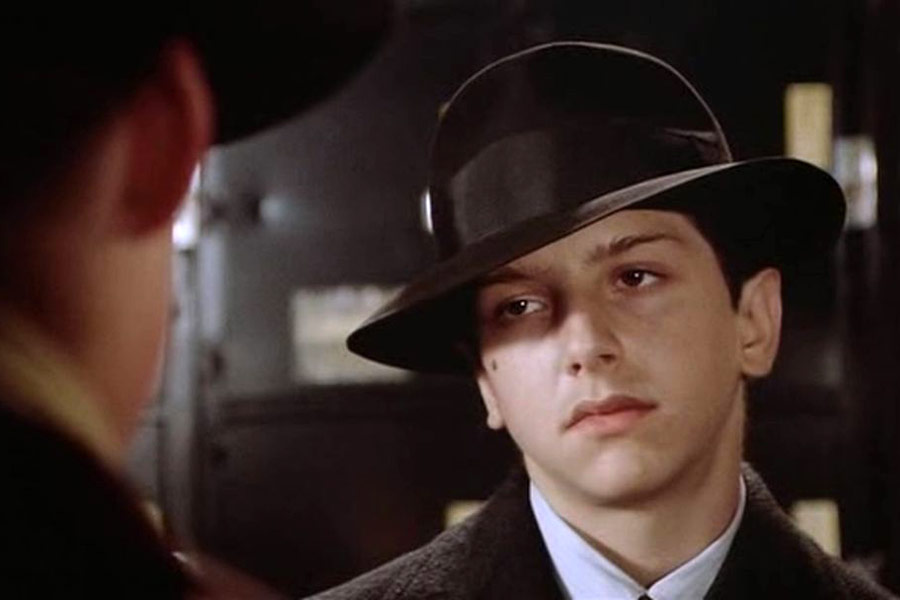
Rusty Jacobs portrayed the young "Max". This was his second of four on-screen roles.

Jennifer Connelly portrayed the young "Deborah". This was her third on-screen appearance and after the picture. Connelly would be seen in 1986's "Labyrinth" with David Bowie and the "Muppets", and 1991's "The Rocketeer".

Supporting Roles:
James Hayden portrayed "Patrick 'Patsy' Goldberg". This was the last of his only seven roles.


William Forsythe portrayed "Philip 'Cockeye' Stein". Forsythe became known for portraying unlikable and nasty characters. Among his films are 1990's "Dick Tracy", 1992's "The Gun in Betty Lou's Handbag", he portrayed "Al Capone" in all forty-two episodes of the reboot of television's "The Untouchables" in 1993, and was in Michael Bay's 1996 "The Rock".
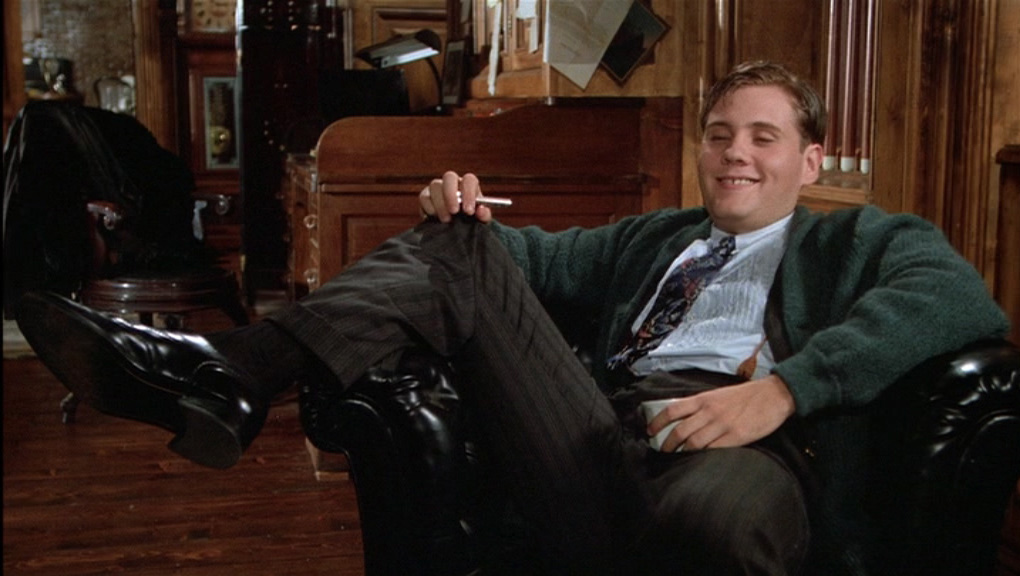
Adrian Curran, in his only on-screen appearance, portrayed young "Cockeye".

Larry Rapp portrayed "Fat Moe". This was Rapp's second motion picture of only five.
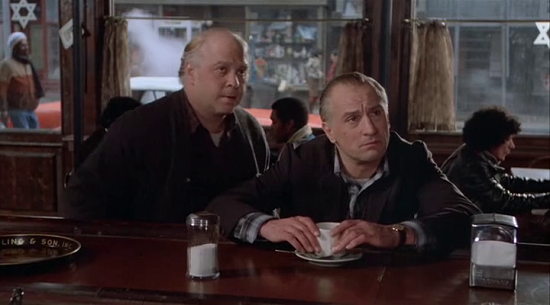
Mike Monetti portrayed the young "Fat Moe". This was his only on-screen appearance.

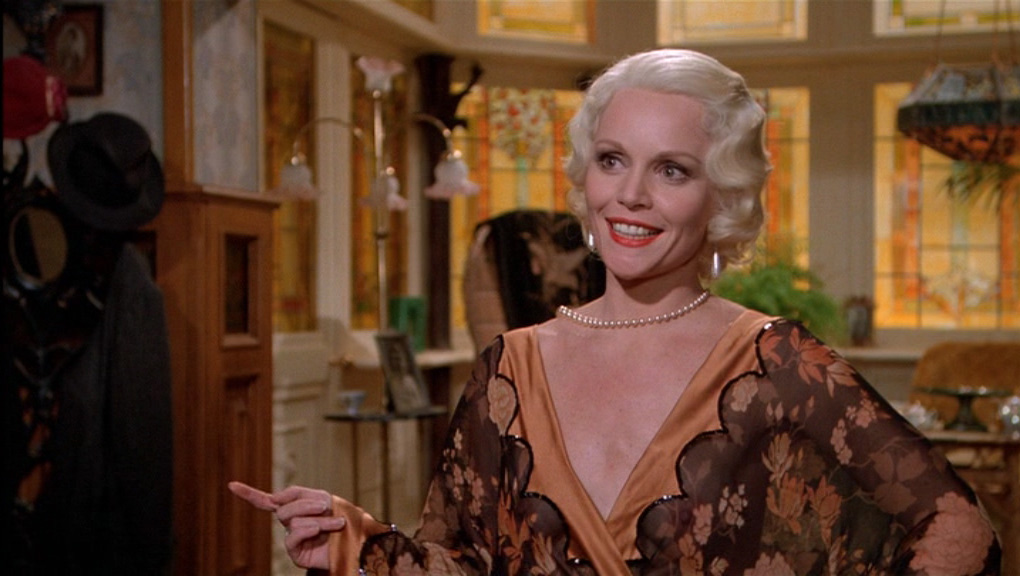
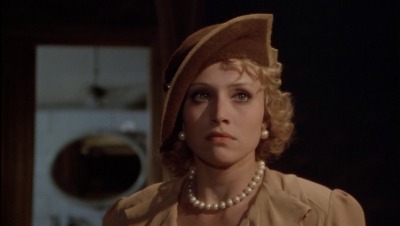

The Basic Screenplay For the Four Hour and 29-Minute Screenplay:
The story opens in 1933, Manhattan, as three thugs enter a Chinese "Wayang (Puppet Theater)" looking for a "Marked Man". The proprietors slip into a hidden Opium Den and warn the "Old Noodles", but he pays no attention.
The audience starts the first flashback, of the police removing three disfigured corpses from a street, are we seeing reality, or an opium induced dream? The story returns to the opium den.
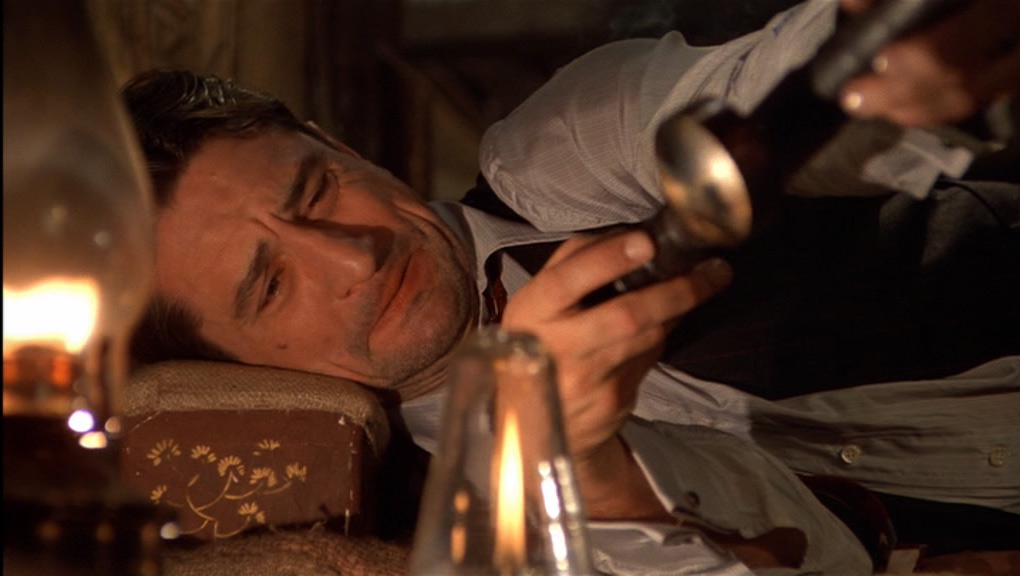
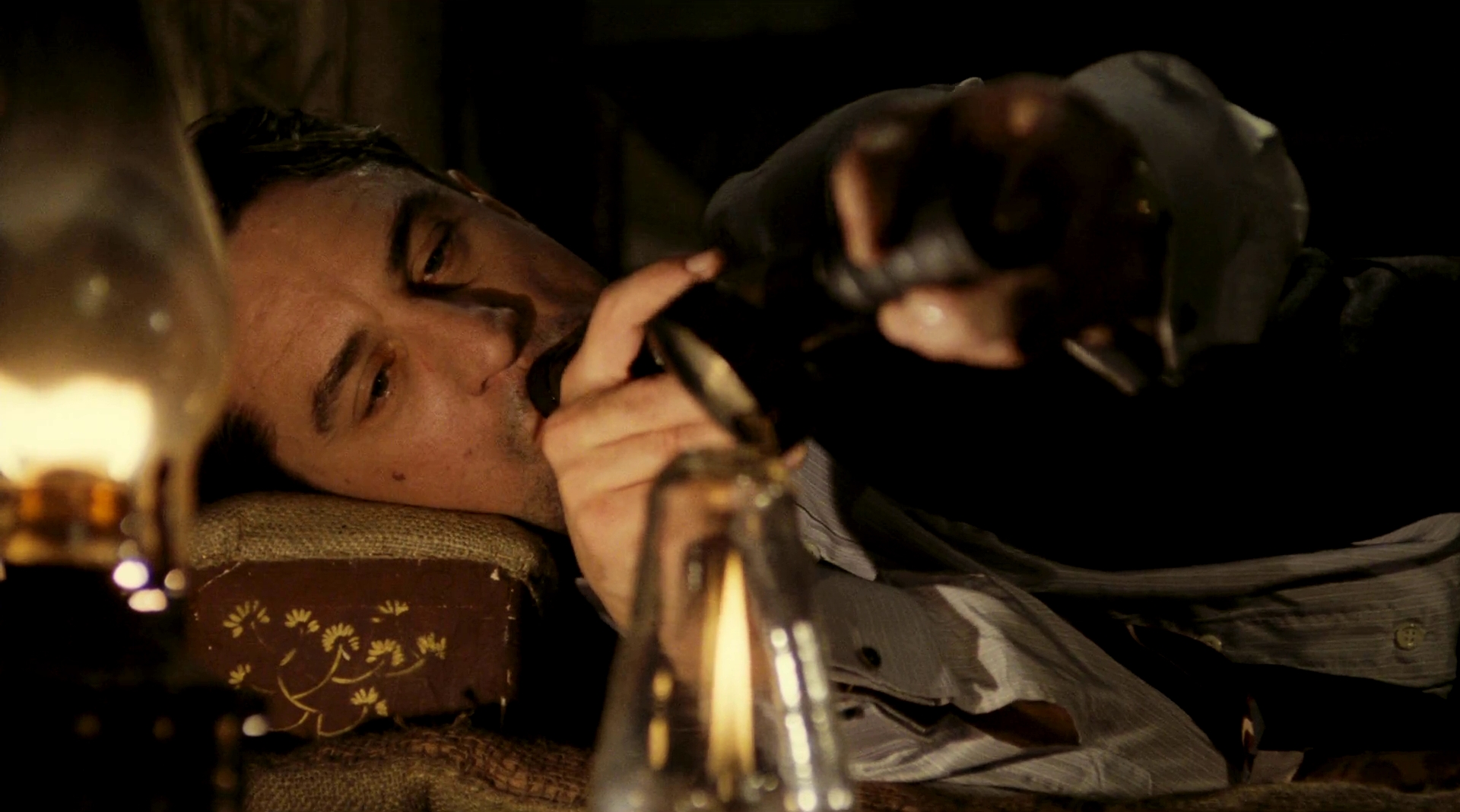
"Noodles" kills one of the thugs that's come after him and leans his girlfriend "Eve" is dead and his money stolen. He decides to leave town.
The motion picture now switches to a teenage "Noodles" and his friends, "Patsy", "Cockeye", and "Dominic", played by Noah Moazezi. All are petty thieves in 1918 Manhattan, New York, and work for a criminal called "Bugsy", played by James Russo.

Above Noah Moazezi as "Dominic". Below James Russo as "Bugsy".
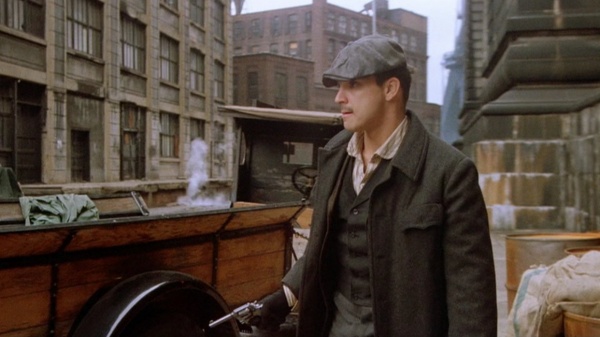
The boys plan to rob a drunk who will be hidden from a police officer by a truck, but "Max" jumps off the truck to rob the man himself. "Noodles" confronts "Max", but a crooked police officer steals the drunk's pocket watch the two are fighting over.

"Max" proceeds to blackmail the police officer. Who is having sex with a young girl named "Peggy", at this time played by Julie Cohen, and the neighbor of "Noodles". "Peggy" also offers herself to "Noodles" for a desert treat that is hard for them to afford.
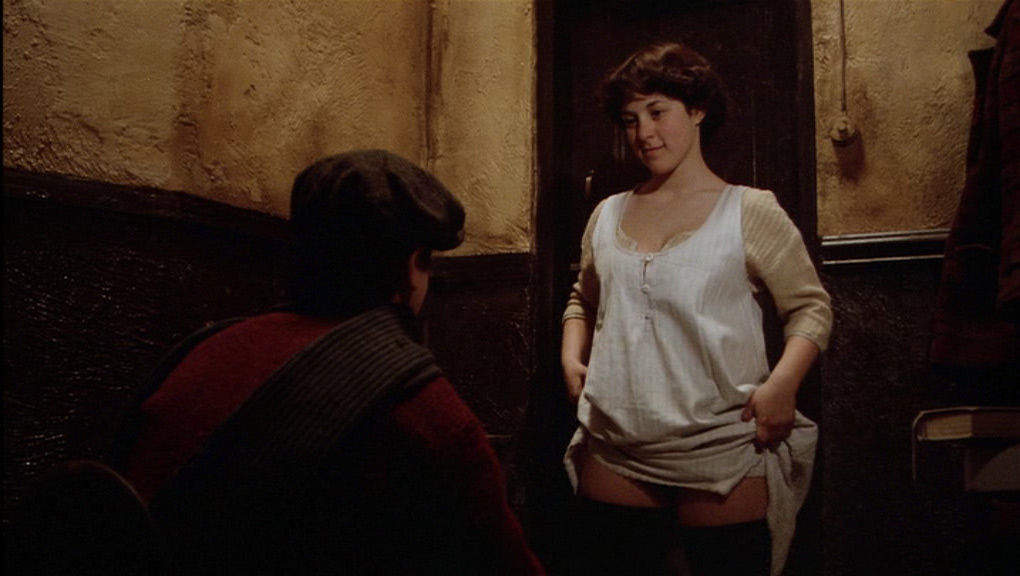

Below the desert of "Peggy's desire.

Next, "Noodles", "Max", "Patsy", "Dominic" and "Cockeye" decide to leave "Bugsy" and form a gang for themselves.
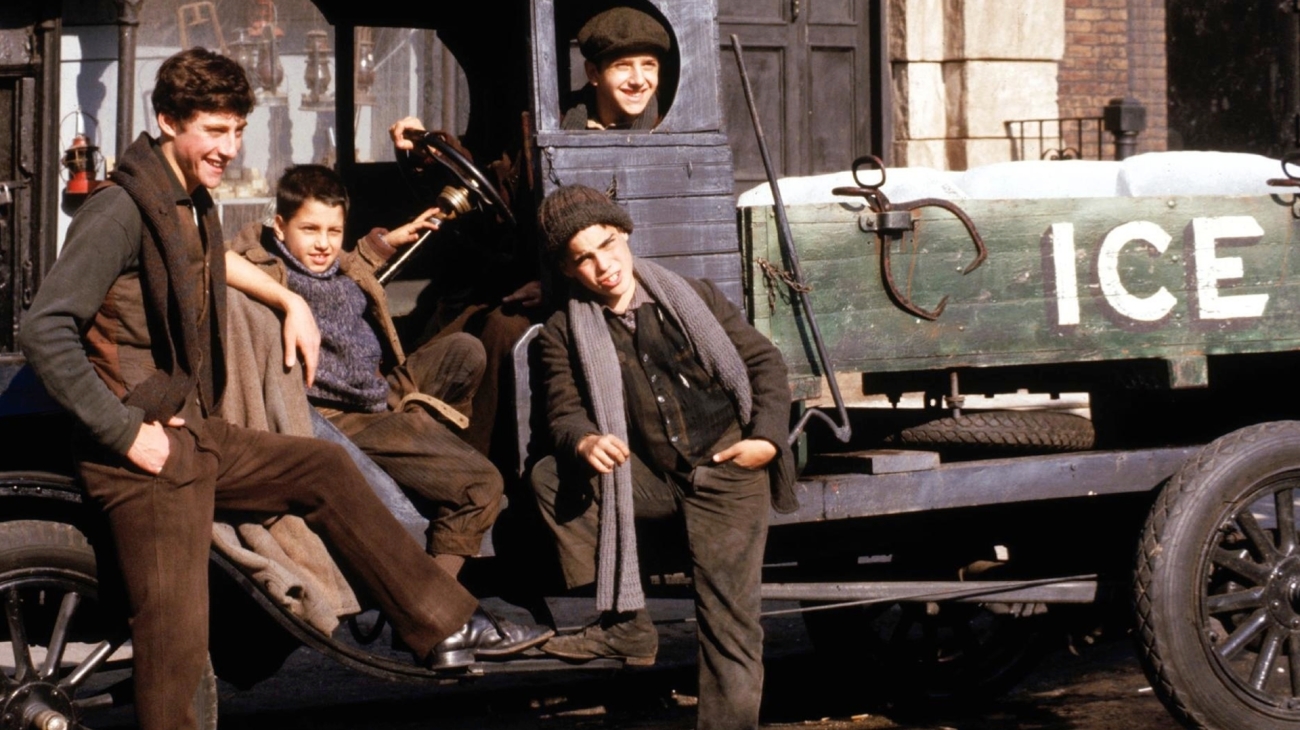


The gang decides to split all money they extort from businesses and put half in a suitcase. The suitcase goes into a locker at the railway station, but the key goes to a good friend, "Fat Moe", who is not part of their operation.
"Noodles" is in love with "Fat Moe's" sister "Deborah", but she dreams of being either a dancer, or actress.

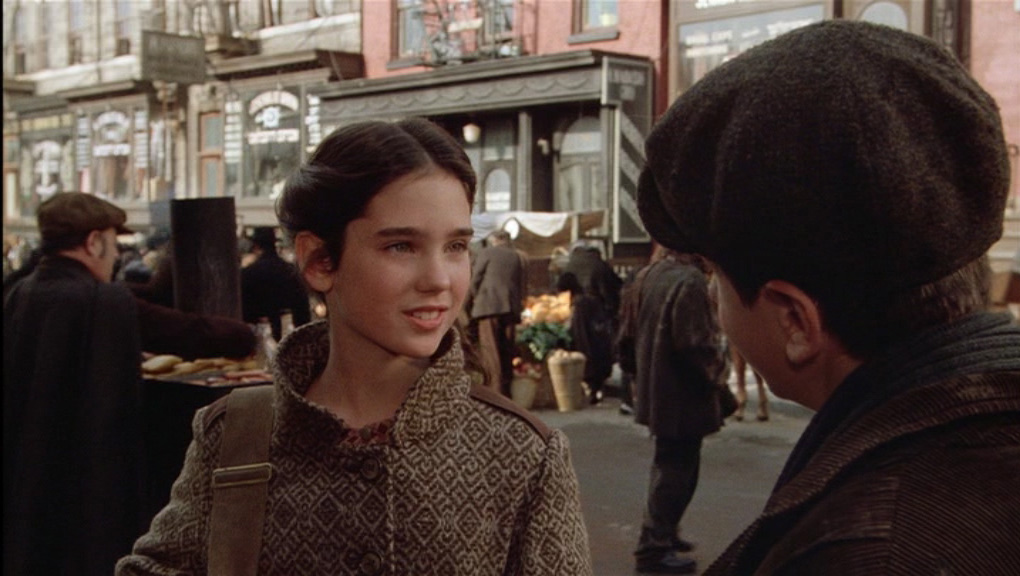

The boys fortunes seem to be riding high, but "Bugsy" now ambushes them and kills "Dominic".

"Dominic" dies in "Noodles" arms and in a blind rage. He stabs "Bugsy" to death, stabs a police officer, and is arrested and sent to prison.
In 1930 "Noodles" is released from prison and reunites with the old gang. Who are now successful bootleggers during prohibition

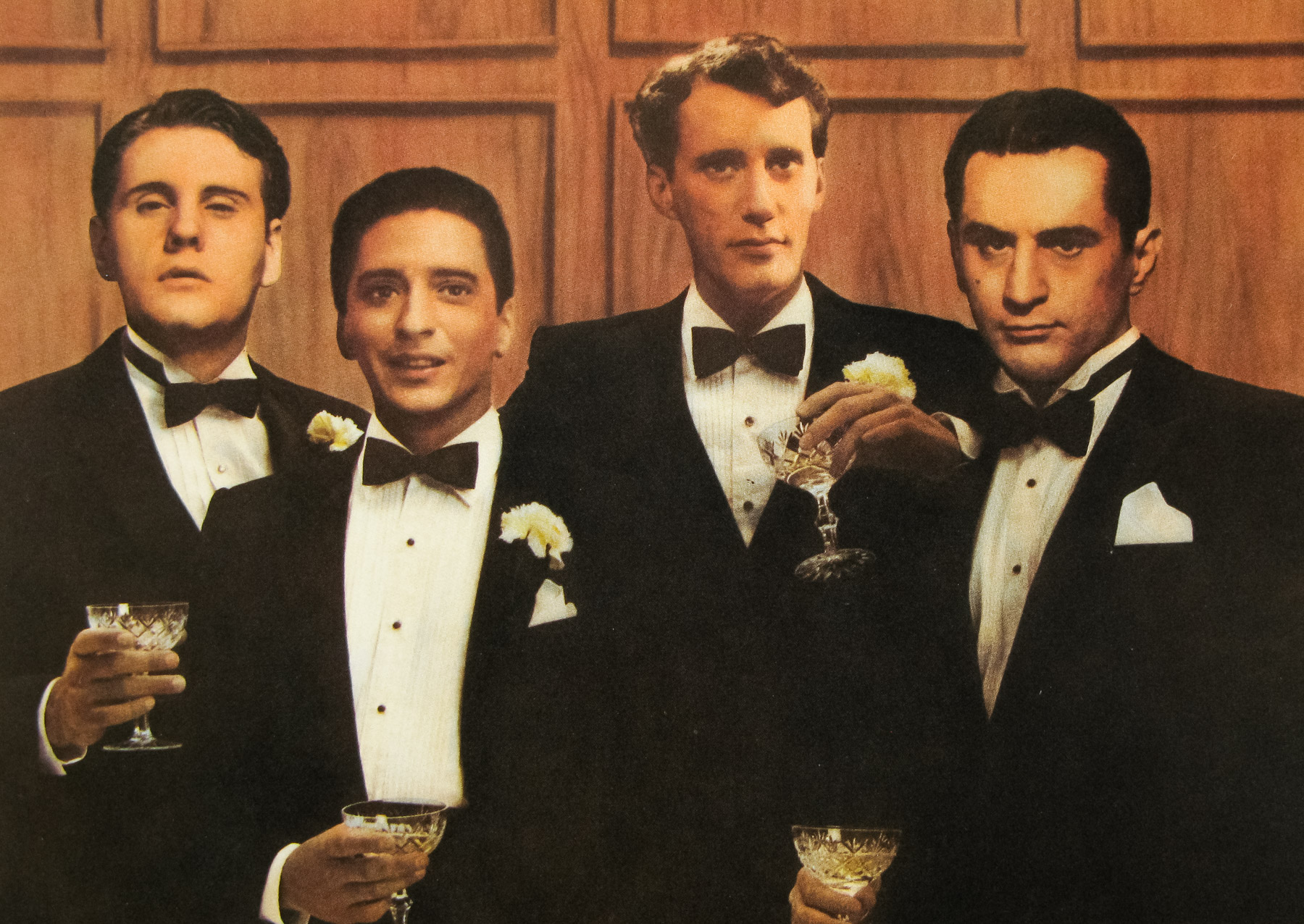
"Noodles" attempts to rekindle a relationship with "Deborah" and asks her to marry him.

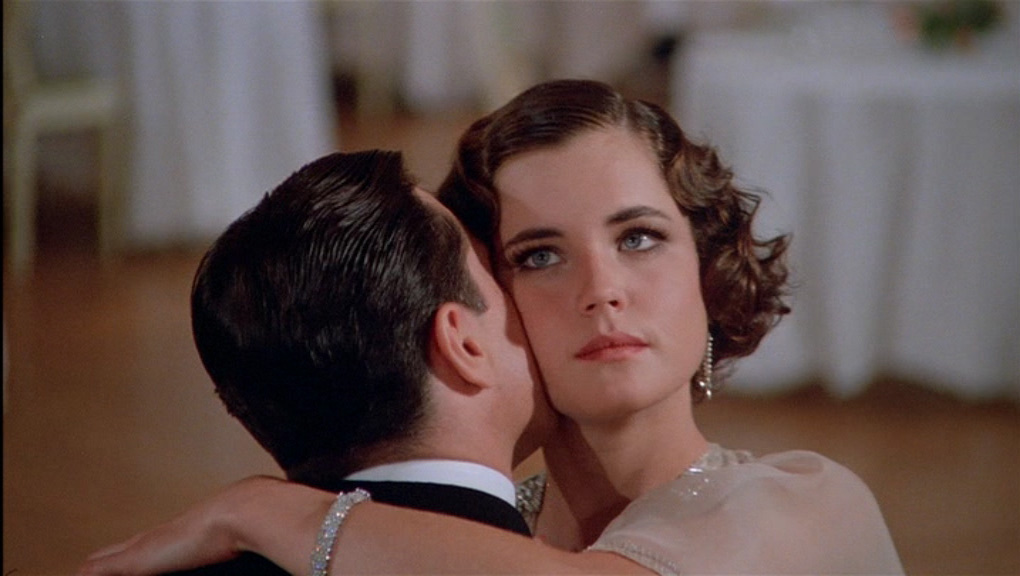
She is still dreaming of becoming an actress, refuses, and tn anger "Noodles" rapes her.
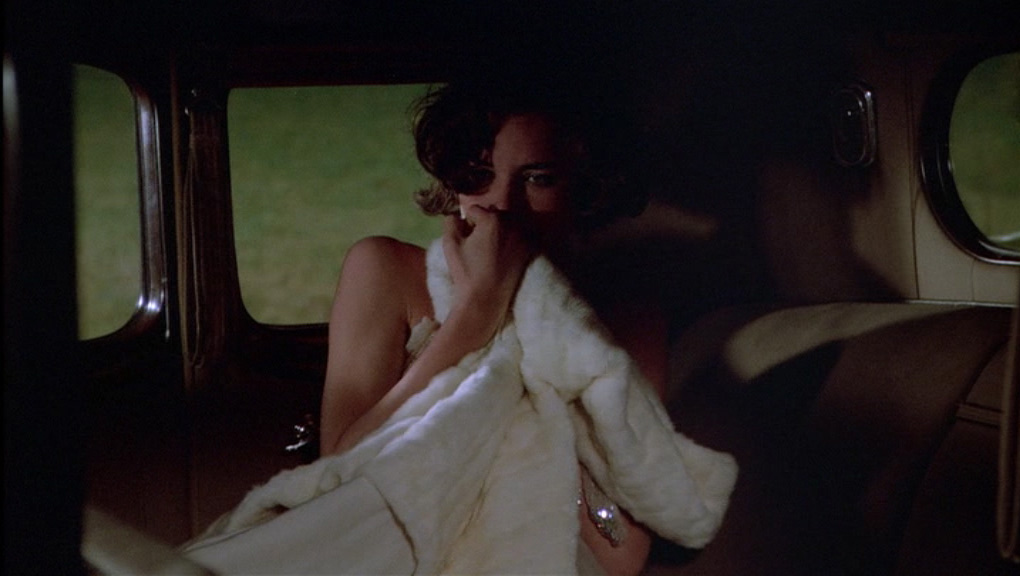
The next day "Noodles' goes looking for "Deborah" at the train station, spots her, but she closes the blind and heads for her dreams in Hollywood.
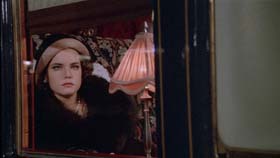
In 1933, with the end of prohibition, the gang's financial success ends. Meanwhile, "Deborah" is on her way to becoming a major Hollywood Star. The gang now meets "Teamster Union Leader" "Jimmy 'Clean Hands' O'Donnell". Whom they rescue from being killed by a corrupt politician's henchmen and in return, O'Donnell offers them a job, but they refuse.
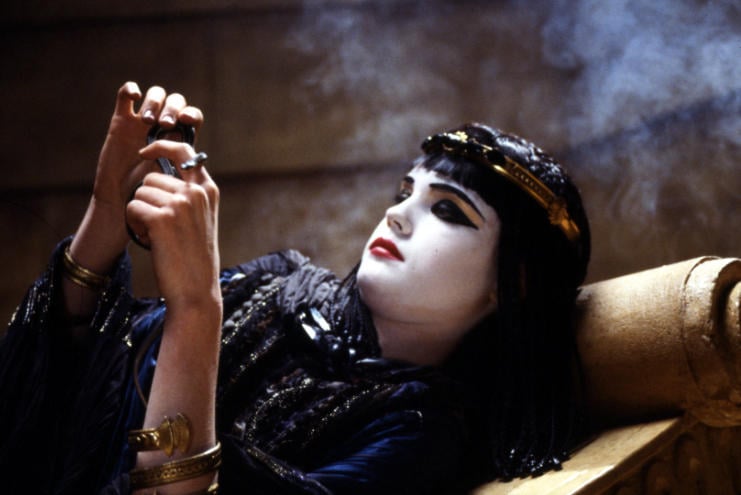
Above "Deborah" on a movie set for one of her films. In 1934 actress Claudette Colbert starred in Cecil B. DeMille's "Cleopatra". Could Sergio Leone be playing off that for the character?
"Max" suggests that the gang join the "Teamsters" as muscle, but "Noodles" objects. "Max" and his girlfriend "Carol", "Noodles" and his girlfriend "Eve", head for Florida.
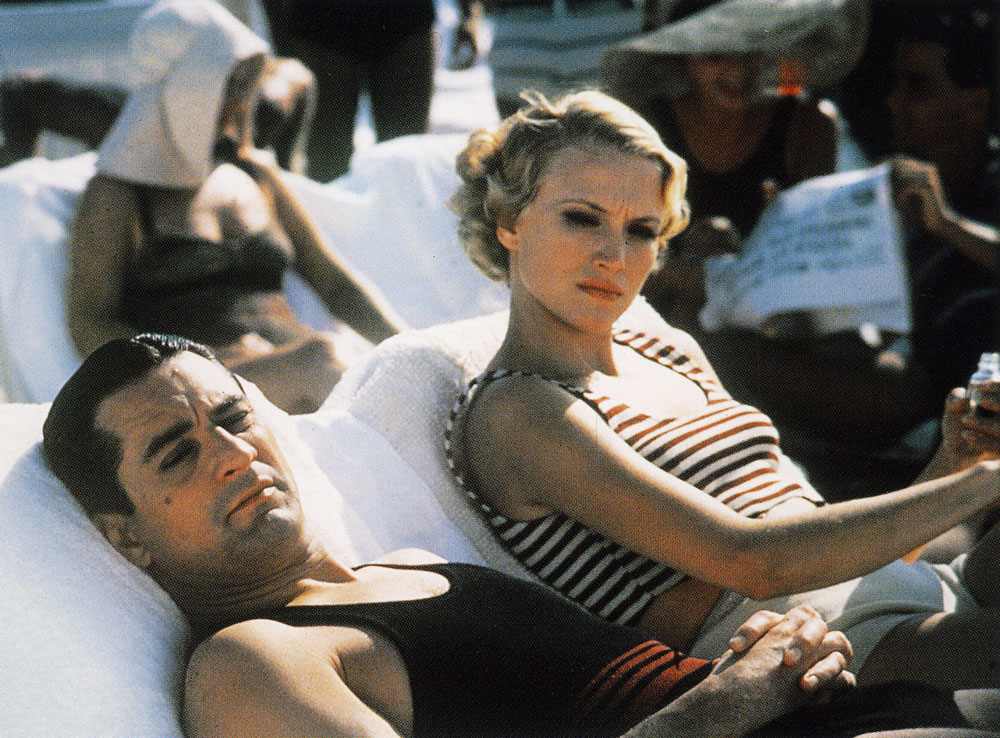
Above "Noodles" and "Eve" enjoying the beach. Below "Max" argues with "Carol".
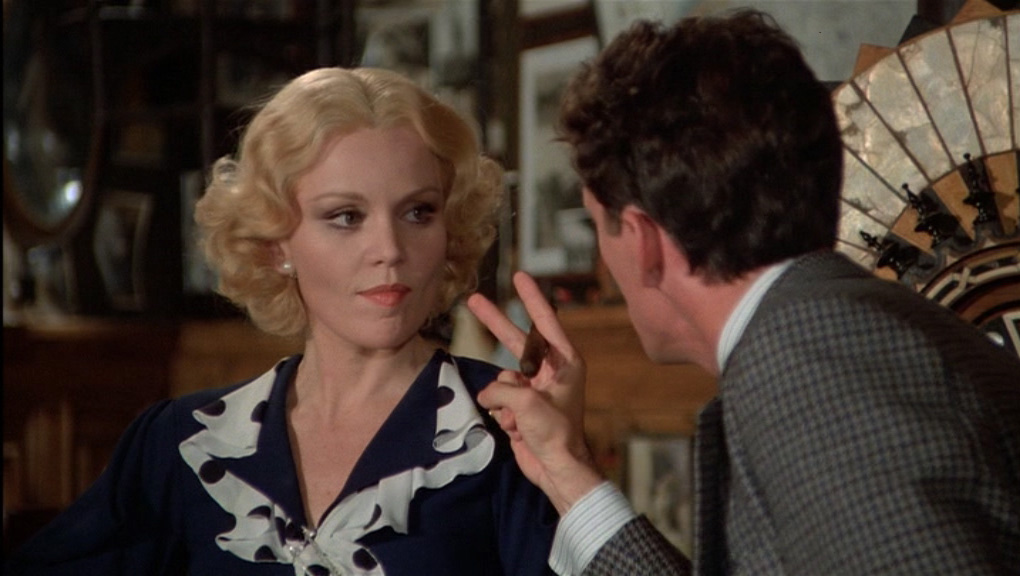
Money appears to be running out and "Max" suggests that they go back to New York City and with the help of "Patsy" and "Cockeye" rob the "Federal Reserve Bank of New York". "Noodles" believes that's a suicide mission, but goes back to New York.

Above "Carol" inspects the planned bank robbers and confirms "Noodles'" thoughts about them pulling off the robbery. "Carol" convinces "Noodles" to call the police and tell them about a lesser robbery that would amount to a one year, or less, jail sentence and all four friends would still be alive. However, "Noodles" is knocked out by "Max" after making the call.
When he regains consciousness, "Noodles" is told his three friends were killed by the police. "Noodles" now blames himself and leaves for Buffalo, New York, to live under the assumed name of "Robert Williams".
In 1968, "Noodles" receives a letter informing him that the cemetery his friends are buried at is to be redeveloped. The letter asks him to make arrangements to move the bodies. Who has found him under his assumed name for the last 35 years?
He returns to Manhattan and stays with "Fat Moe" in an apartment above the restaurant "Moe" owns.


"Noodles" visits the cemetery and discovers a key to the locker the old gang used for their money. He goes to the train station and finds the locker and with the key opens it. Inside is a suitcase full of money, but with an ominous note saying the money is a down payment on "his next job!"
"Noodles" hears about an assassination attempt on the corrupt "U.S. Secretary of Commerce Christopher Bailey".
"Noodles" now goes to the retirement home, owned by the "Christopher Bailey Foundation", that "Carol" is living at.
She now reveals that "Max" planted the idea of "Carol" and "Noodles" tipping off the police, because he didn't want to become insane and die the way his father had in an asylum. The police were going to arrest the three friends, but "Max" deliberately opened fire on them so they would kill him.
"Noodles" sees a photo of "Deborah" standing next to "Bailey" at the dedication of his foundation in "Carol's" room. He tracks her down and finds "Deborah" still an actress.
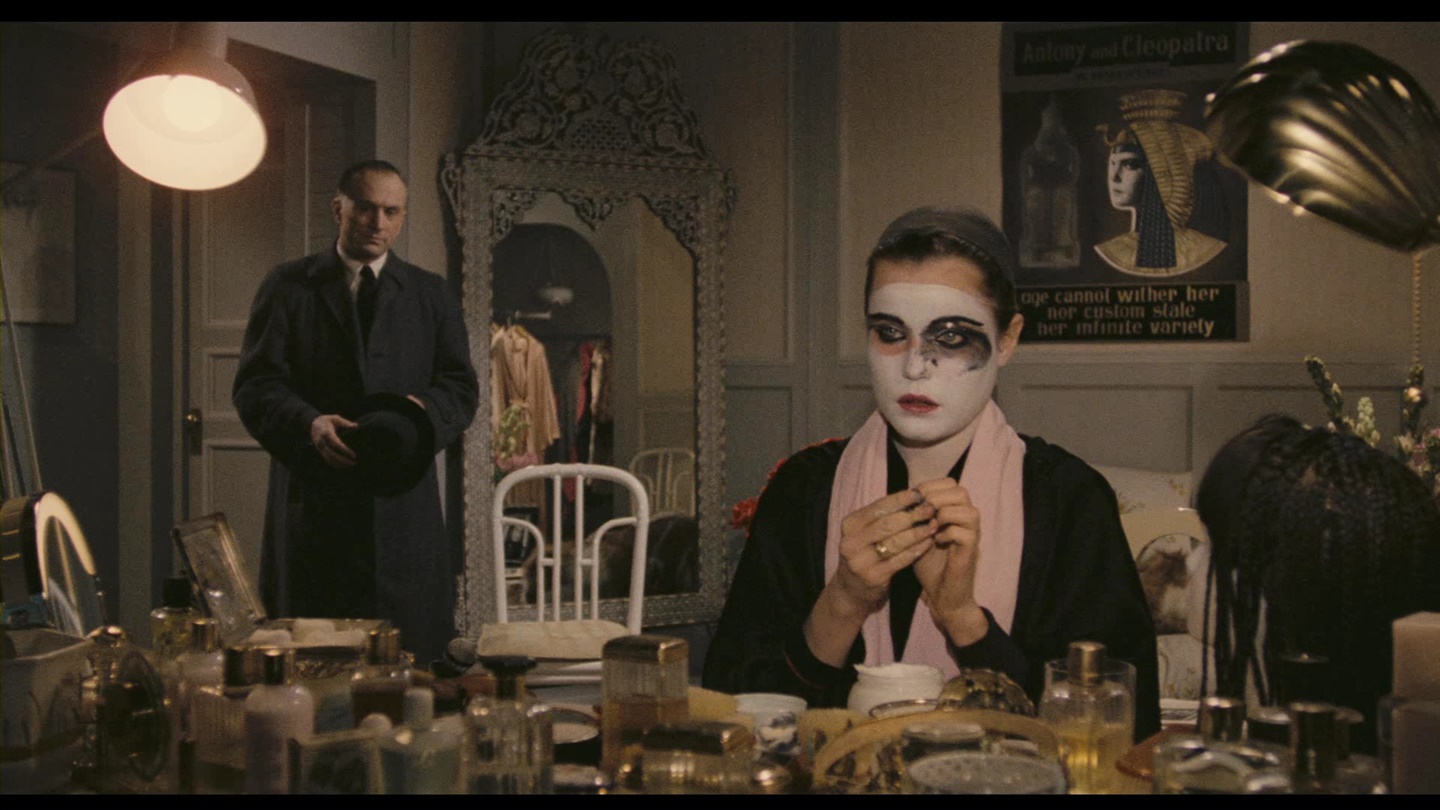
He questions her about "Secretary Bailey" and mentions receiving an invitation to a party he's giving at his estate. "Deborah" claims she's never met the Secretary and to leave her by the back exit. Standing at her dressing room door is "Christopher Bailey's" son "David", named after "Noodles", and bearing a strong resemblance to "Max" and is also played by Rusty Jacobs.
At the party "Noodles" is taken to a private room to meet "Secretary Bailey". Who is, of course, "Max".

He explains that some corrupt police officers helped him fake his death. So he could steal the gang's money, make "Deborah" his mistress, and become "Christopher Bailey". A man with strong connections to the "Teamsters Union", but those have gone sour and explains the attempted assassination
Faced with more attempted assassinations from the "Teamsters", "Max" asks "Noodles" to kill him. It was "Max" that tracked him down and left the money for "his next job". "Noodles" keeps referring to him as "Secretary Bailey" and refuses to end "Bailey's" life, because "Maximilian Bercovicz" died with the gang in 1933.
As "Noodles" leaves "Bailey's Estate". He sees "Max" standing in the drive-way's gated entrance and hears a garbage truck start up. As "Max" walks towards "Noodles", the truck passes him. "Noodles" hears the auger grinding down the rubbish, but "Max" has disappeared.
The film now returns to 1933 with "Noodles" entering the opium den just after his friends death.
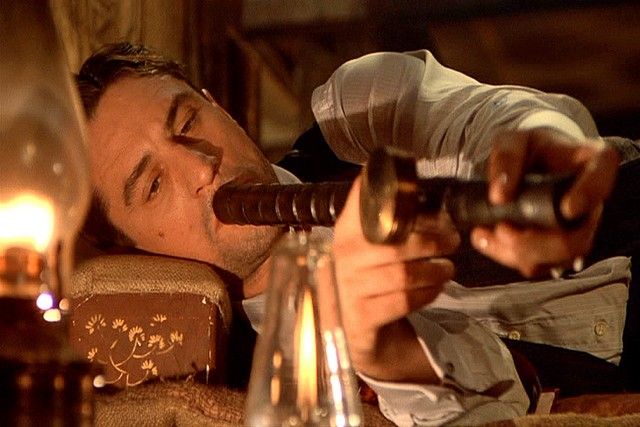
Was all of this nothing more than an opium induced dream? What about the three thugs and if he killed only one. What happened with the other two? The ending confused "The Ladd Company" and was eliminated!










































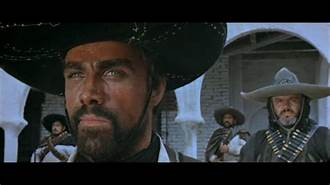









































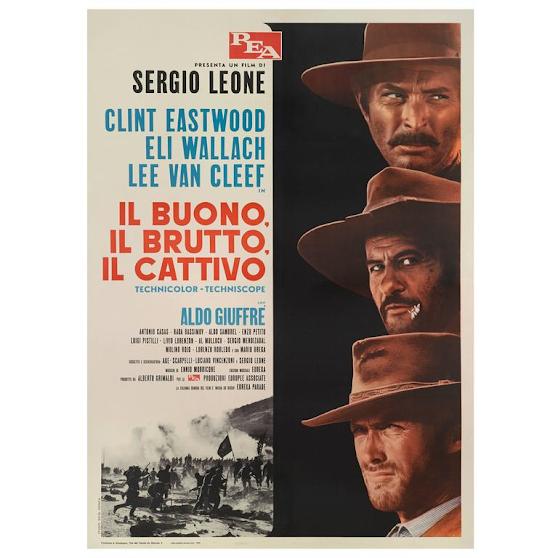















































































































.gif)










No comments:
Post a Comment